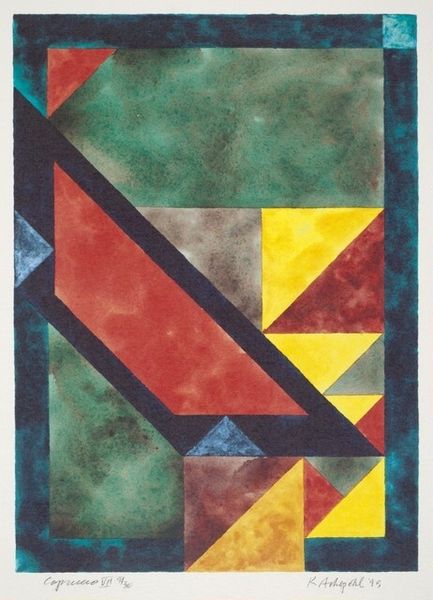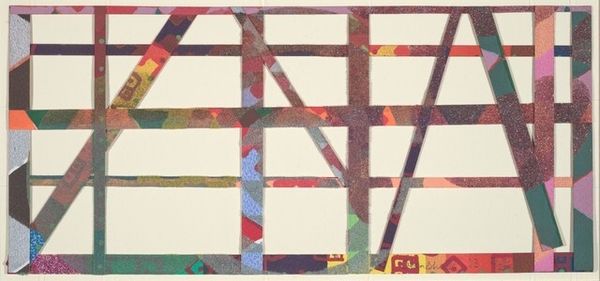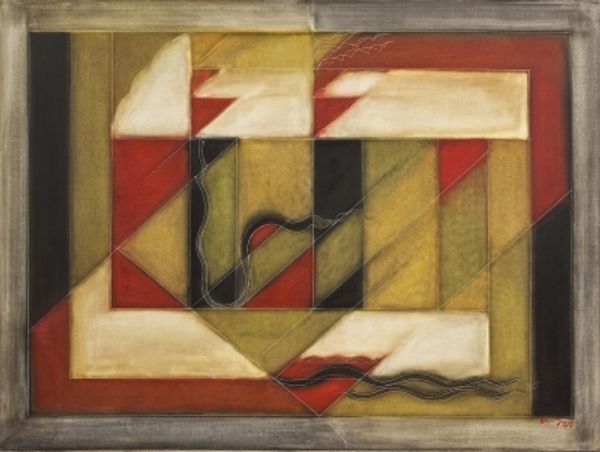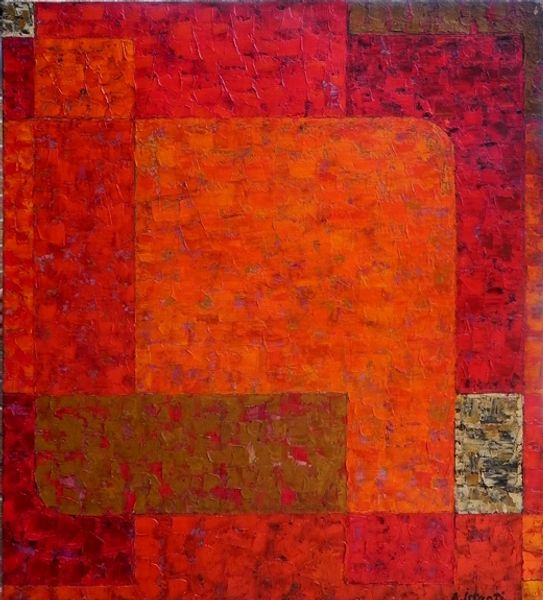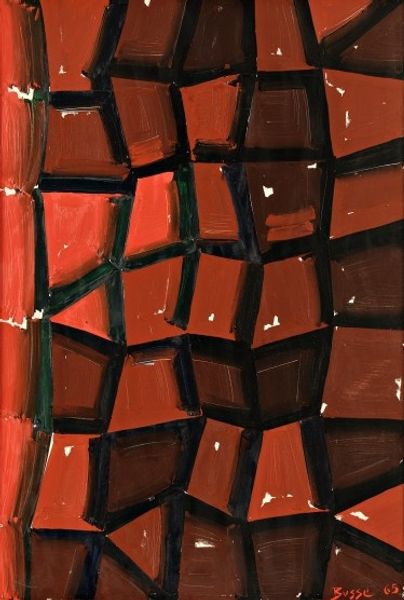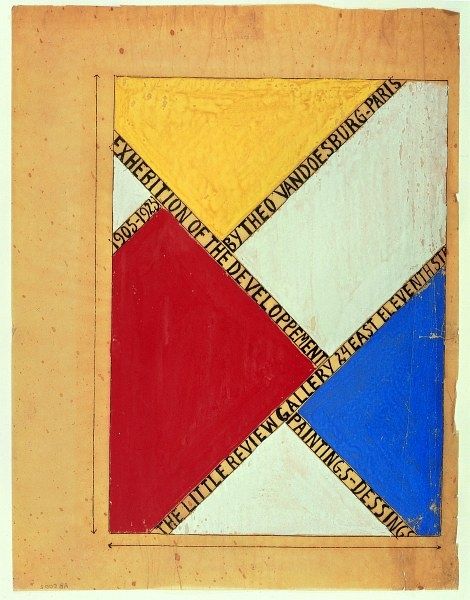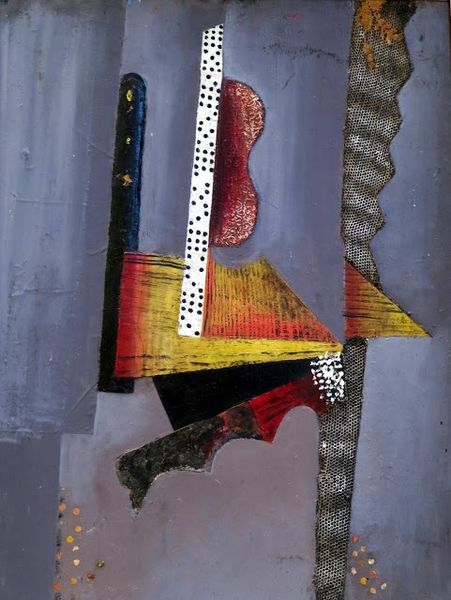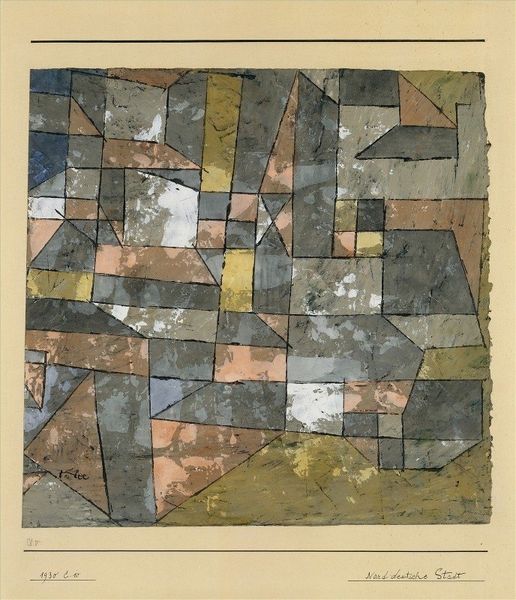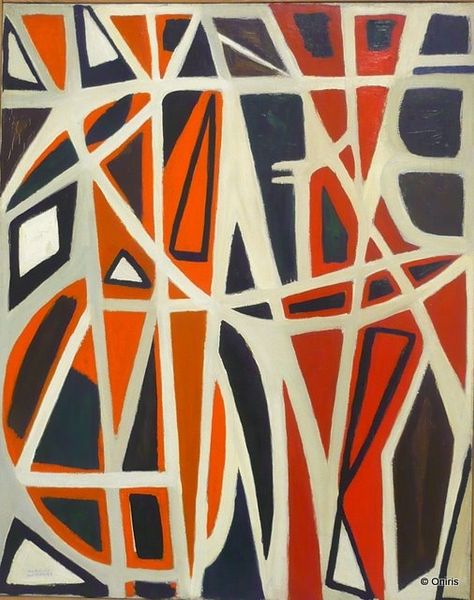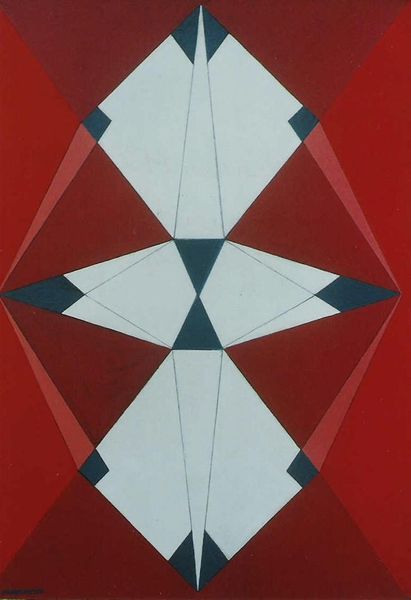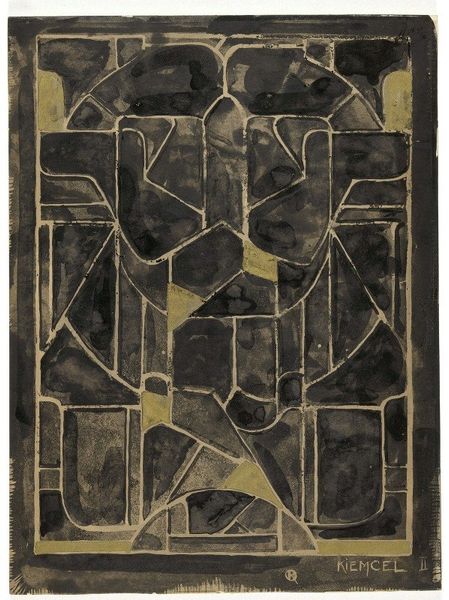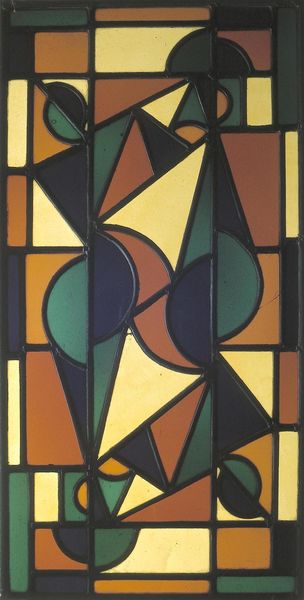
painting, acrylic-paint
#
abstract-expressionism
#
abstract expressionism
#
abstract painting
#
painting
#
acrylic-paint
#
form
#
neo expressionist
#
acrylic on canvas
#
geometric-abstraction
#
line
#
abstract composition
#
modernism
Copyright: Akkitham Narayanan,Fair Use
Curator: Akkitham Narayanan's Untitled abstract piece immediately strikes me as a study in contrasting forces, almost confrontational. Editor: Confrontational, yes. The acrylic paint practically screams from the canvas, doesn’t it? You can almost feel the layering, the conscious application. But confrontational within a rigidly controlled structure of geometric forms. How do you read the social or artistic implications of the artist creating in this manner? Curator: Considering the prevailing trends and sociopolitical contexts within which modernism, particularly abstract expressionism, was produced, such formal approaches challenged institutional norms around material production and artisanal labor. Narayanan’s use of bold geometries—triangles, rectangles—imposes order on what might otherwise become a chaotic, emotionally driven expression. Editor: Exactly. And the palette? It’s far from accidental. The juxtaposition of reds, blacks and whites is carefully considered to highlight material and stylistic contrast. But what societal narratives do you think the artist aimed to dismantle by showcasing process as form? Curator: Well, art galleries often placed emphasis on refined imagery while obscuring the materiality that made artworks possible. Artists that revealed layering, paint types, and overall construction challenged notions of art as exclusively about flawless outcomes. With each layer visible in a piece, it asks us to engage with the history and labor of artistic production in a radical, forthright manner. Editor: But, labor towards what end? I find it difficult to interpret overt sociopolitical meaning given the abstraction. While abstraction might subvert conventional imagery, the museum and its patrons have shown a history of readily embracing even formally revolutionary styles. Has it effectively impacted society, or did the gesture get absorbed by institutional practice? Curator: An important question. Its reception demonstrates the complex interplay between radical aesthetic statements and co-option, ultimately transforming institutional expectations around acceptable forms for art, its meaning making. The dialogue extends beyond pure abstraction to encompass access and ownership, echoing concerns that are deeply embedded in global discourse to this day. Editor: An evolving interplay indeed. It began by shifting artistic dialogues about medium and purpose, only to then get picked up and carried forward within society's larger examination of creative freedoms and production in galleries, museums, and everyday art appreciation. Curator: Agreed, what starts as the artist’s dialogue is carried through art institutions for collective enrichment of cultural life as a whole.
Comments
No comments
Be the first to comment and join the conversation on the ultimate creative platform.
